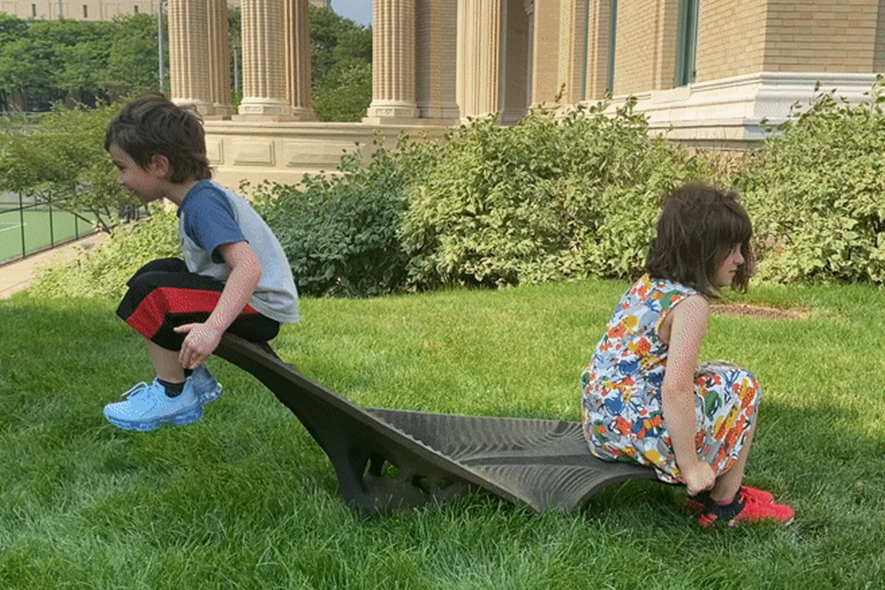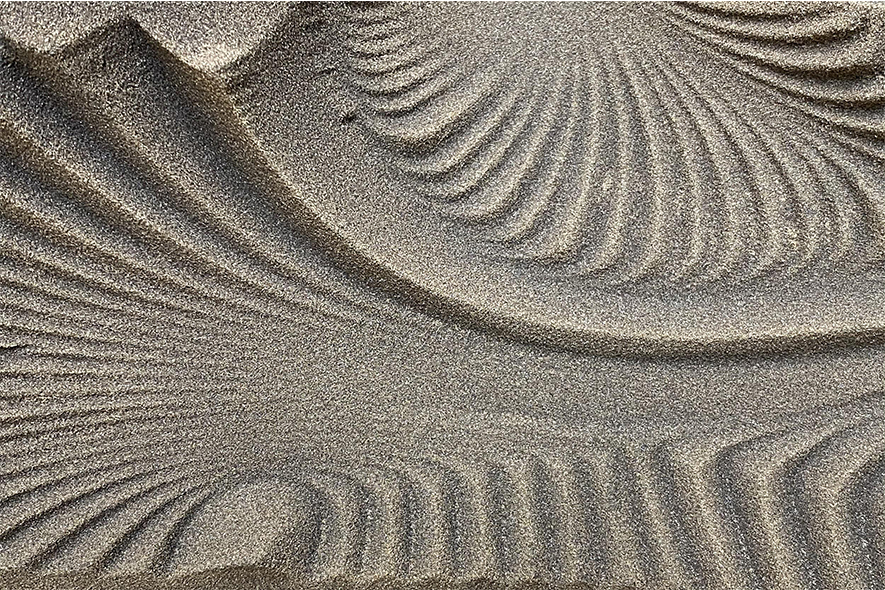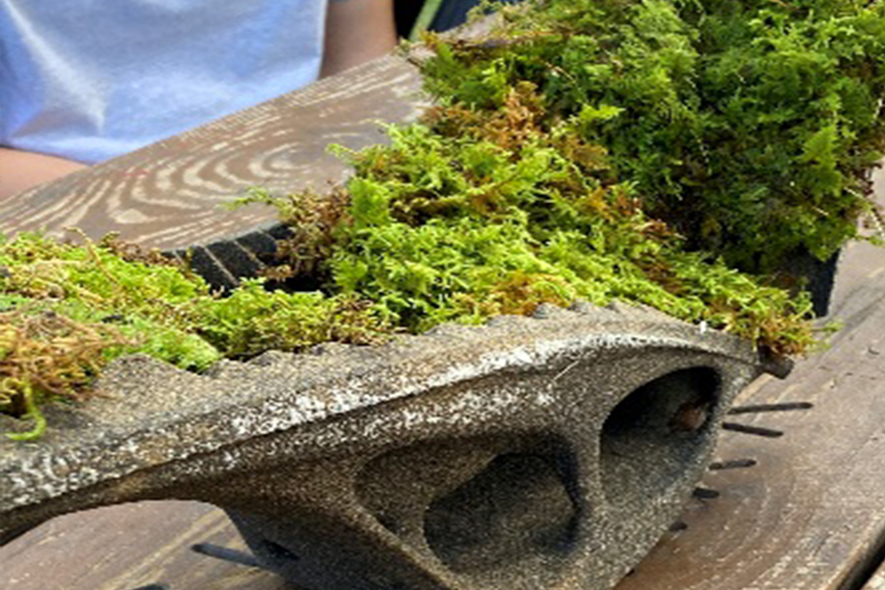
Pittsburgh continues to reinvent what it means to be the Steel City, turning to advanced new manufacturing tools and ideas to move toward a cleaner, more sustainable future.
Carnegie Mellon University School of Architecture Associate Professor Dana Cupkova is a thought leader in this new future and, specifically, how advanced manufacturing technologies are reshaping a new era of material reuse and eco-friendly architecture – increasingly using ExOne binder jet 3D printing that was pioneered and commercialized in the region.
Track Chair of the Master of Science in Sustainable Design program, Cupkova’s view of the future for architecture is a circular one, in which materials are managed as a continuous resource that is both finite and precious. New tools such as 3D printing enable use of these materials in innovative new ways that are sustainable while connecting people and communities more to the environment around them.
Key features of her most recent work are large human-sized cradles, or rocking planters, 3D printed from powdered materials, such as sand or recycled concrete, and then infiltrated and coated with bio-based resins to produce structurally strong designs with unique features that help support water management and natural ecosystems. The cradles are to be placed in the community garden and tree nursery on the Hazelwood Green site where Mill 19, once Pittsburgh’s most productive steel plant, is part of an ongoing a rebirth as a new advanced manufacturing hub with offices that anchor new a new development that also includes housing and urban green spaces.

3D printed cradles encourage community interaction while supporting water management and the natural ecosystem
The cradle is a small but significant part of a larger and growing vision around reused and powderized materials, such as concrete, and the role it should play in sustainable architecture going forward, a concept that Cupkova calls CRuMBLE (Concrete Rubble Manufacturing for Building Lifecycle and Environment).
The carbon footprint of concrete as a material is actually much lower than other building materials like steel, aluminum, and plastic. However, the inefficient way we form concrete into large slabs and the amount of waste it generates offsets many of its benefits. In 2015, over 200 million tons of concrete alone entered the waste steam and less than a third was utilized for remanufacture.
“We use too much concrete – we use it in large, bulky blocks that at scale is no longer environmentally beneficial” Cupkova explains, “and when we demolish existing infrastructure, we dispose of most of that material.”
But binder jet 3D printing recycled concrete that has been pulverized back into powder creates the possibility for concrete to be shaped more efficiently with less volume and waste and allows the material to be recycled back into use. “Ecologically intelligent customization and bespoke design is truly enabled by advances in digital manufacturing technology like binder jetting,” she said.

Master of Science in Sustainable Design students test new geometries
State-of-the-Art 3D Printing Helps Reclaim Nature in the Steel City
Cupkova is a leader connecting research and architectural practice. She looks at the relationship between design space and ecology while working to actively incorporate technological innovation toward creative solutions. “You end up shaping materials differently once you start to prioritize climate-specific concerns and environmental ethics, and 3D printing allows us to design without limitations,” she said.
By approaching design through a lens of environmental stewardship, her team created the cradles as urban furniture encouraging play, curiosity, and community building but that also provide ecological services such as rainwater management in climate-responsive design.
Ecological patterning on the surface of the planters is tailored to the growth of an area’s native plant species while complex water control and storage designs help the cradles become part of the environment itself to capture rainwater. Structural optimization enabled through 3D printing allows Cupkova to design more efficiently, with less material, and also incorporate features like water storage voids to cultivate plants and prevent excess runoff from entering the wastewater system. “The design of the object is shaped in a way that even if humans don’t care, nature cares and uses the shape and material to encourage plant growth. It will care for us,” she explains.
Yet these complex designs are difficult to produce with the limitations of traditional manufacturing methods. Additionally, thermal patterns are climate and location-specific, making it difficult to standardize a design with any ability to scale the concept. Creating custom molds for each location – the traditional way of building with concrete – would increase the carbon footprint of the designs while making production inefficient. ExOne Binder jet 3D printing allows designs customized to the environment of any location to be easily and locally created.

Surface patterns 3D printed directly onto the surface of the cradles

Plant growth encouraged by the ecological patterning of the cradles
Rethinking Waste Streams
For a city still managing the effects of post-industrial pollution, Cupkova sees reclaiming materials and using environmental upcycling as essential to heal both the land and the community. In addition to the geometric complexity and customization that comes with 3D printing, the flexibility of binder jetting enables the CMU team to reimagine the possibilities of waste stream diversion and explore novel ways to reuse materials.
Starting with a bed of powder, ExOne binder jetting machines use an industrial printhead to selectively deposit binder that builds a solid part in unique shapes one thin layer at a time. The design is then infiltrated with a bio-based, high-performance epoxy resin. Cupkova’s team has already achieved cement-like strength and material properties in prototype designs built from the standard sand used by foundries in large-format binder jetting systems.
Now, they’re advancing their project by moving on to reclaimed materials. “We will be working with local demolition companies to collect existing waste that we can pulverize into granular powder for testing with 3D printing,” Cupkova said. Remanufactured into feedstock for binder jetting, her team uses materials like concrete diverted from the waste stream and upcycled to prevent new material production and enable local re-use, further reducing the carbon footprint of the manufacturing process.
Ultimately, with advanced manufacturing techniques, Cupkova’s Team CRuMBLE concept is pushing architects to rethink entire lifecycles and enhance material usage with buildings designed for both construction and reuse – a cradle-to-cradle approach.
“In addition to geometric complexity, the customization abilities of 3D printing enable more efficient use of building materials where old building stock can be recycled and new buildings can be designed for disassembly,” Cupkova said.
See videos of the cradles in action and read the complete case study here.
Subscribe to Our Email Newsletter
Stay up-to-date on all the latest news from the 3D printing industry and receive information and offers from third party vendors.
You May Also Like
IperionX Inks 10-Year Deal with Wisconsin Manufacturer for 80 Metric Tons of Titanium Per Year
IperionX, the Charlotte-based supplier of sustainable titanium powders used for additive manufacturing (AM) and metal injection molding (MIM), has signed a ten-year deal with United Stars, a group of industrial...
Gastronology Launches Industrial Production of 3D Printed Food for Dysphagia Patients
Food 3D printing has, in many ways, been an additive manufacturing (AM) segment looking for the right business case. While some applications are beautiful and others may or may not...
Lockheed Martin Leads $3M Investment in Q5D’s Electronics 3D Printing System
Q5D, an original equipment manufacturer (OEM) of robotic arm, hybrid additive manufacturing (AM) systems used for wire harness production, has closed a $3 million investment round. The investment arm of...
3D Printing News Briefs, April 6, 2024: Depowdering, Cybertruck Door Handles, & More
In today’s 3D Printing News Briefs, ioTech’s digital manufacturing CLAD technology is opening up opportunities for microelectronics and additive manufacturing. Hexagon and Raytheon Technologies commercially released the Simufact Additive Process...































